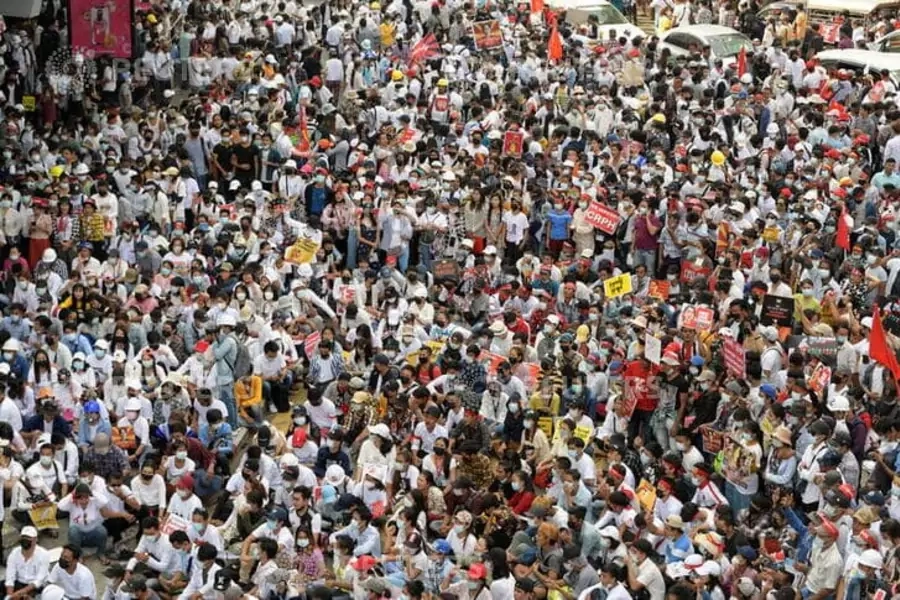Myanmar: Optimism and Fear

Over the weekend, and into Monday Myanmar time, the situation in the country continues to disintegrate. Although the civil disobedience movement continues to show its strength, with large demonstrations over the weekend and on Monday, the armed forces have begun to crack down with deadly force in Mandalay and other parts of the country; police killed two protestors in Mandalay on Saturday, and injured at least twenty others.
This decision almost surely presages a coming crackdown with deadly force in Yangon. There, in the largest city, the protests have been massive, and the junta may have been wary of confronting such large groups, and especially in a place that is also the home of most embassies, reporters, and other foreigners working in Myanmar. But in other places, like Mandalay and other parts of the country, where there is less media coverage and few if any foreign observers, the authorities are already shooting at protestors. This escalation has not, so far, deterred demonstrators; there were large turnouts, in the thousands of people on Sunday and Monday Myanmar time.
More on:
The situation is particularly ominous, however, for several reasons. One, as the independent analyst David Scot Mathieson notes in a detailed piece on the Tatmadaw, the Myanmar military has consistently shown both high levels of brutality and an ability to keep itself from splintering, even in the face of protests and other pressures that have forced militaries in other countries to splinter. “The Tatmadaw has been remarkably successful at ensuring institutional cohesion,” he notes.
Second, the Myanmar armed forces appear to be deploying military units that already have become notorious for brutality and crimes in other parts of the country, like the 33rd Light Infantry that operated in Rakhine State, to major cities such as Mandalay. This is a sign that the Tatmadaw leadership may be preparing for much greater violence, and it has parallels with crackdowns after prior coups in Myanmar like the one in 1988, when military units were unleashed in major cities, after being fed vitriolic propaganda about the protestors whom they then killed in large numbers. Arrests are rising as well—nearly six hundred people have been arrested or charged or sentenced in recent weeks, according to the Financial Times.
Third, as veteran Myanmar analyst Bertil Lintner notes, this coup appears to have been long prepared, given that the junta government has put together such a large cabinet and advisory council, which probably was planned well in advance of the actual putsch. Such planning and coordination suggest an armed forces leadership prepared to dig in for the long run.
On Monday, Myanmar protestors staged probably the largest demonstrations since the coup, in the face of junta warnings that the protests could be met with significant force. The civil disobedience movement, and much of the country is essentially shut down. Some Southeast Asian states have even slowly begun to respond, with Indonesia calling on other Association of Southeast Asian Nations (ASEAN) states to develop a plan to push the junta to hold elections. For now, however, the prospect of a severe crackdown remains.
More on:
 Online Store
Online Store